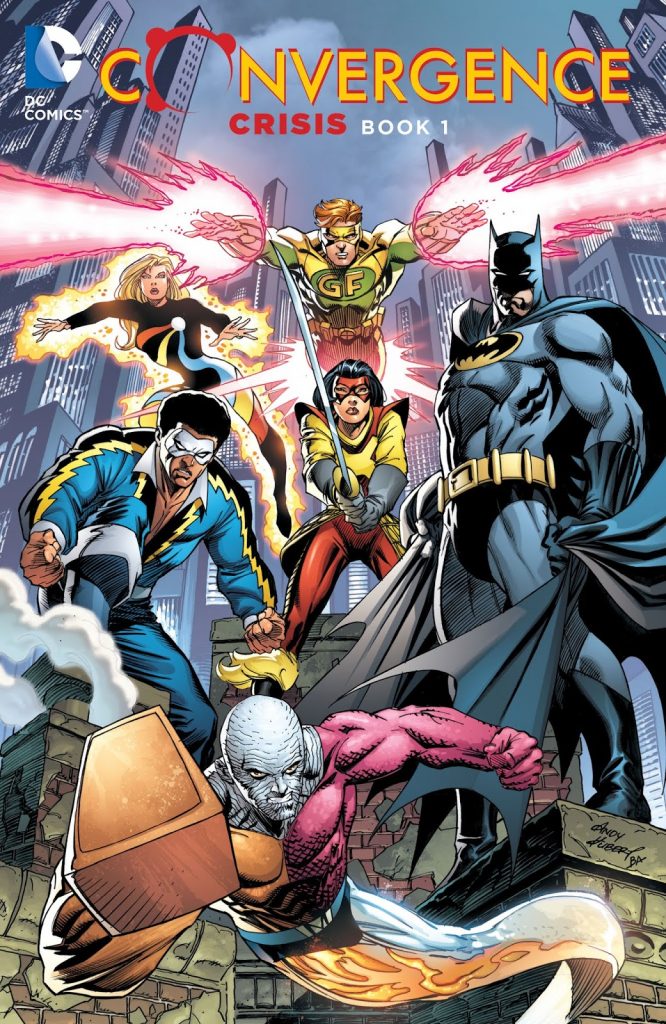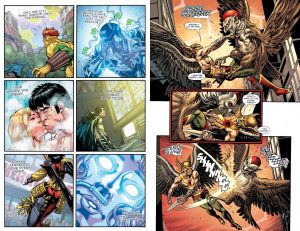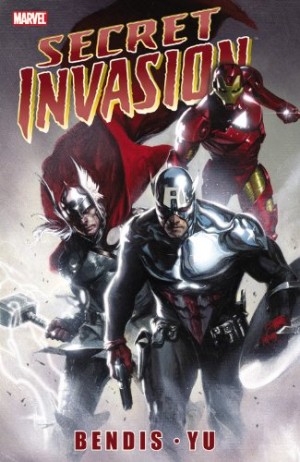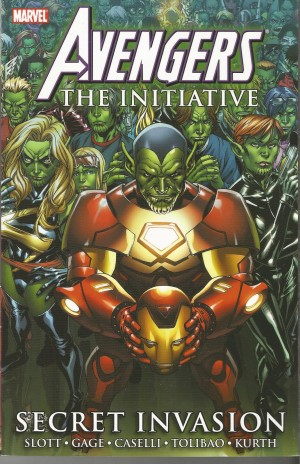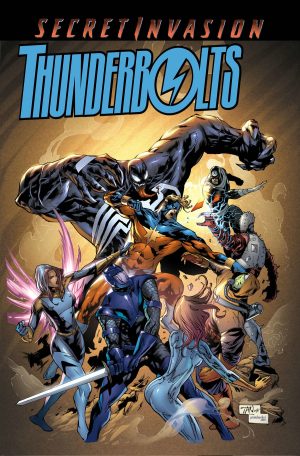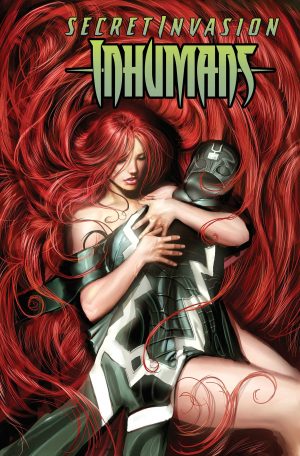Review by Frank Plowright
Convergence was DC’s 2015 event method of restoring most original versions of DC’s superheroes, supplanting the ‘New 52’ characters introduced four years previously. It’s achieved via the usual massive dust-up involving dozens of superheroes, with the greater novelty found in eight tie-in graphic novels, issued as a Book 1 and Book 2 per theme, each containing five stories. These can be enjoyed without reference to Convergence, and are aimed at older fans by featuring the characters as they were in earlier eras, in the case of Crisis approximately the mid-1980s, accounting for the long gone Batman and the Outsiders on the cover. Two chapter visits are taken to assorted cities home to superheroes, the cities trapped in impenetrable domes where they’ve been for a year. Something about the domes removes super powers, and early in each segment the heroes are told they’ll have to fight another batch of heroes to the death.
In each case the writers follow a template of focussing on a single superhero or team for most of the opening chapter, then introduce the secondary heroes, guest stars if you will. These feature some real surprises, and some will have even dedicated fans scuttling online to discover who they are, although there is a common theme to them. The surprises are ingenious with considerable appeal, and most writers come up with some creative twist beyond that. Marv Wolfman, for instance, makes inventive use of Superman’s background via the neat idea of Supergirl and techy colleagues considering they may be able to escape containment by accessing the Phantom Zone and emerging somewhere on Earth not trapped within a dome. A tragic glimpse of Supergirl’s future is also well incorporated by Wolfman.
With some exceptions the artists aren’t well known and their quality is variable, suggesting these stories were tryouts. Roberto Viacava is given two great chances for visual splendour and doesn’t shine with either, and Steve Ellis’ interpretation of assorted Green Lanterns is blocky and over-worked. Gus Storms gives the 1980s Legion of Super-Heroes strangely massive eyes, but otherwise successfully evokes the era’s look with the muted colours of John Rauch sealing that. He’s replaced for the second chapter by Peter Gross laying out the pages for Mark Farmer, providing a more traditional look. The sample art is from Carlos D’Anda, very Scott Kolins, as the Outsiders hear what’s happening, and the welcome sight of Tim Truman, very nicely inked by Quique Alcatena, returning to Hawkman.
There seems to have been some editorial confusion as Superman and Supergirl are followed by Hawkman and Hawkgirl in facing variations of the same threat, but both stories engage, as does most of the remaining writing. Dave Gallaher’s focus on Guy Gardner shortly revived from his coma starts well, but then meanders, and Marc Andreyko provides some good ideas for the Outsiders (Metamorpho grateful for having no powers). That may have greater appeal for fans of the original Outsiders, but it improves when the guest comes calling.
With marginally more good than average, this should provide the nostalgic treat intended, and another volume follows, while there are also pairs of graphic novels titled Convergence: Flashpoint, Convergence: Infinite Earths and Convergence: Zero Hour.
